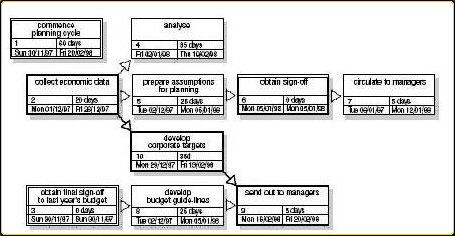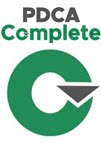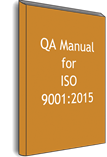Activity Network Diagram Definition
Description : An Activity Network Diagram is also called: arrow diagram, network diagram, activity chart, node diagram, CPM (critical path method) chart or PERT (program evaluation and review technique) chart .
When To Use:
When scheduling and monitoring tasks within a project or process with several dependent tasks and resources.
When your project schedule is critical. You foretell serious consequences for completing the project late or a significant advantage to completing the project early.
PDCA Complete is an organizational task management system with built-in continuous improvement tools. Includes projects, meetings, audits and more.
Built by Quality Assurance Solutions.
Drawing The Activity Network Diagram Example:
- List all the necessary tasks in the project or process. You can write each task on the top half of a note-card or a sticky note. Then across the middle of the card, draw a horizontal arrow pointing right.
- Determine the correct sequence of the tasks. Do this by asking three questions for each task: Which tasks must happen before this one begins? Which tasks can be done at the same time as this one? Which tasks happens immediately after this one? It can be useful to create a table with four columns prior tasks, this task, simultaneous tasks, following tasks.
- Diagram the network of tasks. If you are using sticky notes or note-cards, arrange them in sequence on a large piece of paper. For the activity network diagram
example, time should flow from left to right and concurrent tasks should be vertically aligned. Leave space between the cards.
- Between each two tasks, draw circles for events. An event marks the beginning or end of a task. Thus, events are nodes that separate tasks.
- Look for the three common problem situations noted below. Redraw them using dummies or extra events. Characterize a dummy with a dotted line arrow. Dummies are not real tasks.
Problem Situations:
Two simultaneous tasks start and end at the same events.
Solution: Use a dummy and an extra event to separate them. Here event 2 and the dummy between 2 and 3 have been added to separate tasks A and B.

Task C cannot start until both tasks A and B are complete; a fourth task, D, cannot start until A is complete, but need not wait for B.
Solution: Use a dummy between the end of task A and the beginning of task C.

PDCA Complete is an organizational task management system with built-in continuous improvement tools. Includes projects, meetings, audits and more.
Built by Quality Assurance Solutions.
A second task can be started before part of a first task is done.
Solution: Add an extra event where the second task can begin and use multiple arrows to break the first task into two subtasks. Here event 2 was added, splitting task A.

7. Determine task times the best estimate of the time that each task should require. Use one measuring unit (hours, days or weeks) throughout, for consistency. Write the time on each tasks arrow.
8. Within the Activity Network Diagram determine the critical path, the longest path from the beginning to the end of the project. Mark the critical path with a heavy line or color. Calculate the length of the critical path: the sum of all the task times on the path.
9. Calculate the earliest times each task can start and finish, based on how long preceding tasks take.
These are called earliest start (ES) and earliest finish (EF).
Start with the first task, where ES = 0, and work forward.

Finish the Activity Network Diagram by drawing a square divided into four quadrants, as in Figure 4. Write the ES in the top left box and the EF in the top right.
PDCA Complete is an organizational task management system with built-in continuous improvement tools. Includes projects, meetings, audits and more.
Built by Quality Assurance Solutions.
For each task:
o Earliest start (ES) = the largest EF of the tasks leading into this one
o Earliest finish (EF) = ES + task time for this task

|
Quality Assurance Solutions Robert Broughton (805) 419-3344 USA |
 |
|
Software, Videos, Manuals, On-Line Certifications | ||
|
An Organizational Task Management System. Projects, Meetings, Audits & more | ||
|
Corrective Action Software | ||
|
Plan and Track Training | ||
|
AQL Inspection Software |
|
450+ Editable Slides with support links | ||
|
Learn and Train TRIZ | ||
|
Editable Template | ||
|
Templates, Guides, QA Manual, Audit Checklists | ||
|
EMS Manual, Procedures, Forms, Examples, Audits, Videos | ||
|
On-Line Accredited Certifications Six Sigma, Risk Management, SCRUM | ||
|
Software, Videos, Manuals, On-Line Certifications |


























